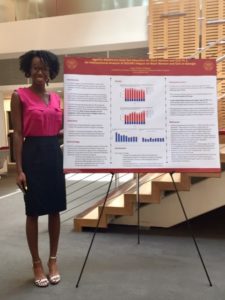Major and Classification
Cognitive Science
Faculty Mentor
Dr. Ange-Marie Hancock Alfaro
Department
Political Science and International Relations
Research Gateway Project
“Against AOUM Education for Black Women and Girls in the South”
Project Abstract
Federal funding for abstinence-only sex education is on the rise and with this increase in funding, many organizations are looking into the effects abstinence programs have on the sexual health of young adults. One area that is not currently being investigated is how these abstinence-only programs affect the sexual health of women belonging to racial minorities, particularly black women. This issue is especially salient considering the CDC has said that black women have rates of STIs that are up to 7.6 times higher than those of white women nationwide. This study examined scope of the STI problem facing black women and girls in the Southern United States, and what role abstinence-only sex education plays in this epidemic. Using the CDC’s AtlasPlus program, the rates per 100,000 of the STIs Chlamydia, Gonorrhea, and HIV were compared for black and white women and girls aged 13-24 in Georgia and California. Georgia and California were chosen as test states because their sex education policies differ tremendously, with Georgia’s being abstinence centered and California’s being very comprehensive. The results of this study showed that the rates of Chlamydia and Gonorrheaare on the rise in Georgia, while they are on the decline in California. In both states there is a large discrepancy between the rates of these STIs between white and black women, which suggests that all sex education programs (abstinence-only and comprehensive) need to be reevaluated in order to become more effective at reducing STI rates among black women and girls. However, in Georgia (where abstinence-only sex education is the standard) the discrepancy between STI rates between black and white women is increasing as STI rates rise, suggesting that abstinence-only sex education is disproportionately affecting black women and girls in the state.
